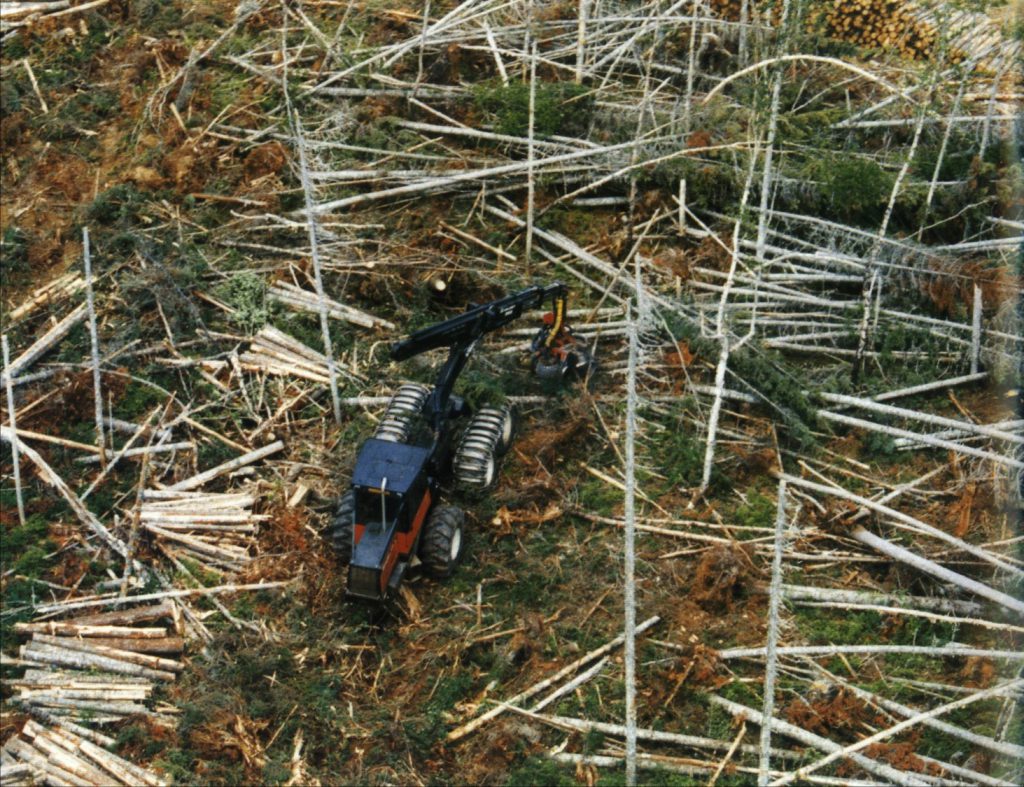25 years After the Big South “Christmas Mountains” Blowdown Event

Difficult to believe, but this Thursday (Nov.7) will mark the 25th anniversary of the Big South “Christmas Mountains” blowdown event. Similar to that historic day, we are expecting some snow this Thursday. The attached photos tell some of the story. Following the blowdown, there was significant planning undertaken by Repap (the Licensee at the time) and DNR to determine time frames, regulations, and woods worker training required to salvage the blown down timber. Camps were established, and others enlarged, to accommodate the large workforce. Logging crews also came from other licenses to assist with the task. Ultimately, approximately 2 million M3 of wood was salvaged over a 2 ½ year time frame.
I would be remiss not to mention that it was also a time of considerable interaction with environmental organizations who argued that the old balsam fir (standing or blown down) is representative of the central NB high lands area and should be preserved. Industry argued that the 70-80-year-old trees were at the end of their natural life span and, ultimately, naturally regenerate to the same species following harvest. In the end, the salvage moved forward…but there were also conservation areas established over time and increased ecological studies in the zone.
Today, in my opinion, it is often difficult to specifically identify the large “salvage clear cuts” we worked on. The new forest is now 25 years old with much of the area having been pre-commercially thinned. Large areas, once brown following salvage are now green. Many of the branch roads used for salvage are now completely grown in. As this forest landscape grows over time, I often hear comments (from a forest management viewpoint) that large tracts of this Balsam Fir will likely once again transition to a harvest scenario at the same time; we will cross that bridge a few years down the road!
In the meantime, the area must be protected from spruce budworm infestations as we continue to rely on the success of early intervention strategies. Forest scientists also raise the real concern of how a changing climate will alter this high elevation ecosystem. Ongoing Forest Management Plans will consider wood supply scenarios integrated with habitat models to meet the requirements of a wide range of species found there (from Bicknell’s Thrush, Lynx, Marten…just to name a few). It is now, quite obviously, also the home range for a healthy moose population.
Ultimately, in the realm of forest management, if trees are growing on a site, we have lots of options; needless to say, there are lots of trees growing in the Big South!
